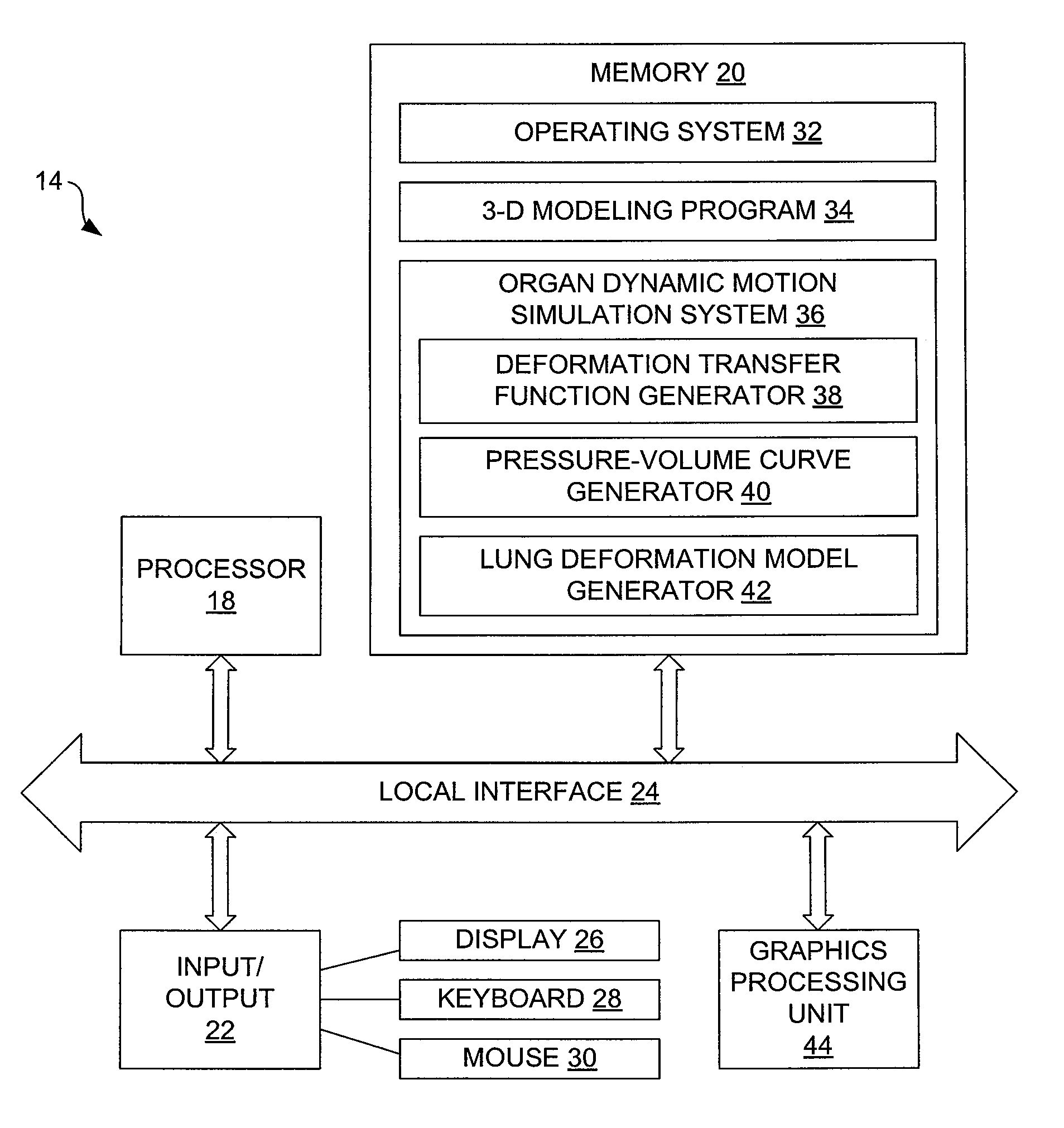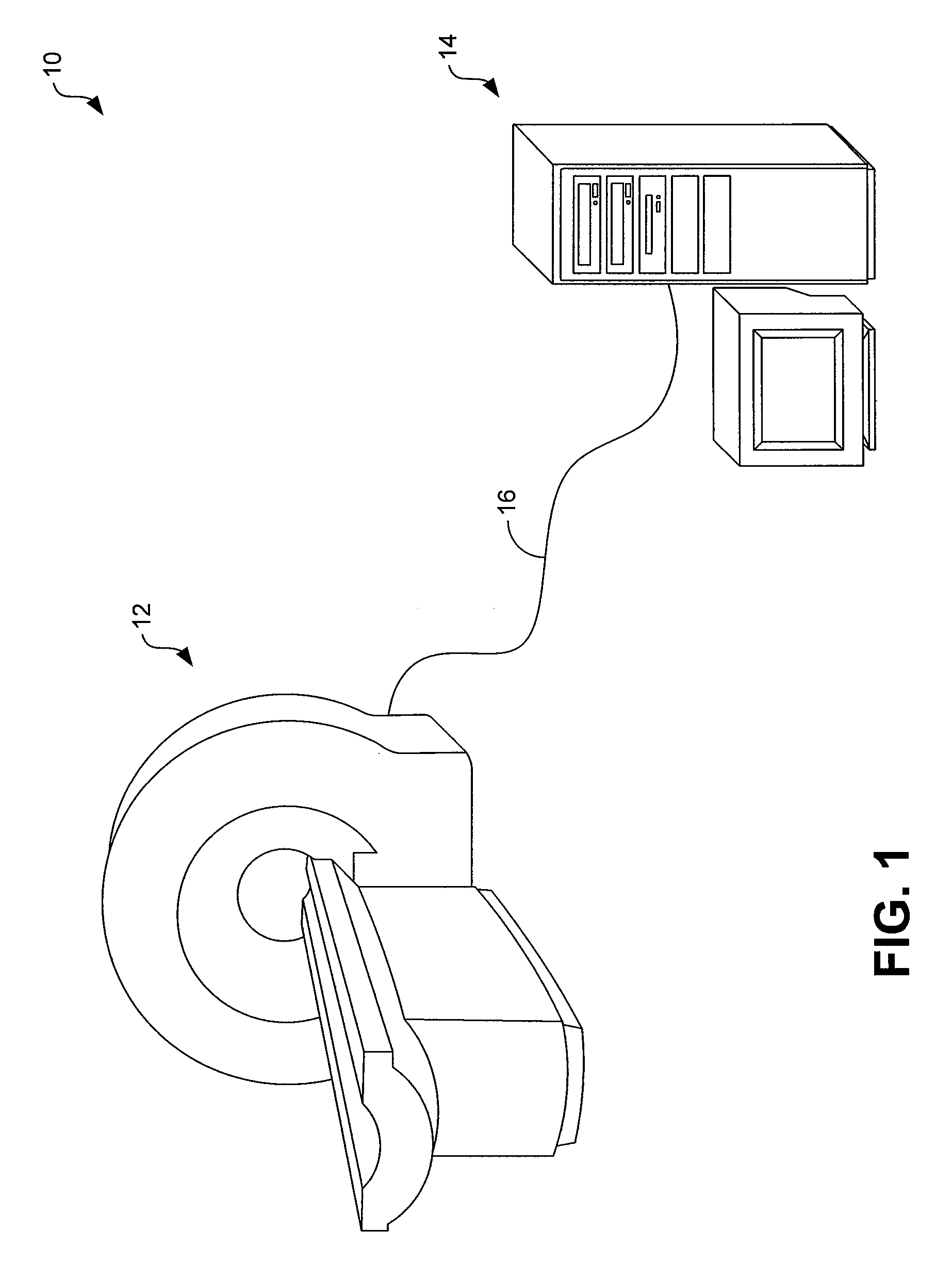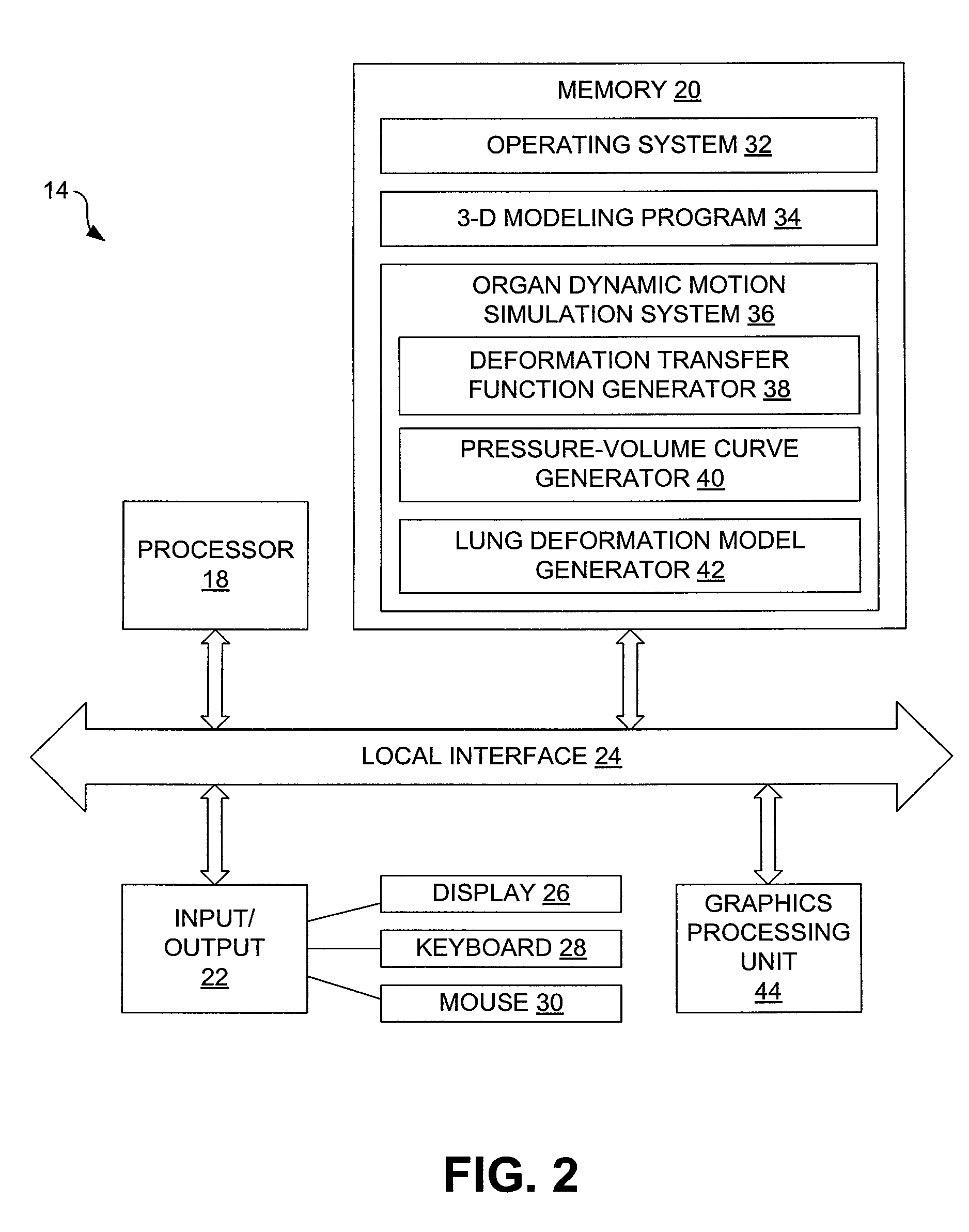Systems and Methods for Simulation of Organ Dynamics
a system and organ technology, applied in the field of systems and methods for simulation of organ dynamics, can solve the problems of inability to provide more advanced visualization paradigms, inability to provide discrete images, and inability to provide predictive components regarding the motion of specific organs
- Summary
- Abstract
- Description
- Claims
- Application Information
AI Technical Summary
Problems solved by technology
Method used
Image
Examples
Embodiment Construction
[0016] As described above, there are various limitations to current medical imaging techniques, one such limitation being the inability to predict the dynamic motion of an organ. Disclosed herein, however, are systems and methods that can be used to real-time simulate organ dynamics in three-dimensions.
[0017] In some embodiments, the systems and methods can be used to simulate dynamic motion of human lungs. To create such a simulation, images of the lungs of a subject are captured during breathing and are used to generate a three-dimensional lung model. As described in greater detail below, the lung model can then be used to generate a deformation transfer function and a pressure-volume curve. Once the deformation transfer function and the pressure-volume curve are generated, they can be used to generate dynamic lung models for various instances of time.
[0018] Although simulation of lung dynamics is described with specificity in this disclosure, it is to be appreciated that the di...
PUM
 Login to View More
Login to View More Abstract
Description
Claims
Application Information
 Login to View More
Login to View More - R&D
- Intellectual Property
- Life Sciences
- Materials
- Tech Scout
- Unparalleled Data Quality
- Higher Quality Content
- 60% Fewer Hallucinations
Browse by: Latest US Patents, China's latest patents, Technical Efficacy Thesaurus, Application Domain, Technology Topic, Popular Technical Reports.
© 2025 PatSnap. All rights reserved.Legal|Privacy policy|Modern Slavery Act Transparency Statement|Sitemap|About US| Contact US: help@patsnap.com



